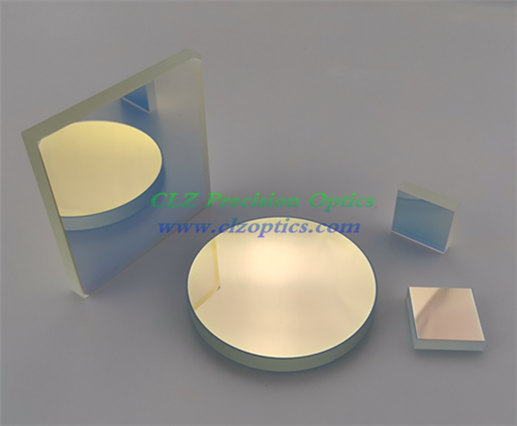What is optical mirror?
Optical mirrors are precision optics with a highly polished plane or curved surface which reflects light. At CLZ Optical we manufacture custom optical mirrors for a wide range of applications. Life Sciences, astronomy, metrology, and solar engineering are only a few of the industries which depend on our precision mirrors and other optical components.
Our state of the art machinery allows us to manufacture high quality mirrors designed to reflect a certain wavelength range while allowing light transmission in other wavelengths. Custom optical mirrors and precision reflectors can also be designed to reflect at pre-specified angles.
Our broadband dielectric mirrors are ideal for demanding applications. Durable and stable, they offer near total reflection over wide spectral ranges (up to 100s of nanometers) and can be used over wide angles of incidence. These mirrors are resistant to environmental or laser damage and are suitable for visible, NIR, and UV light.
Broadband metallic mirrors also offer high reflection over a broad spectral range. They are easy to set up, being insensitive to angle of incidence and polarization. We often recommend these coated mirrors as a good combination of performance and value.
We also manufacture high performance ultra-broadband metallic mirrors. Here the substrate is coated first with a reflective metal film and then with a dielectric overcoat. Our metallic coatings include aluminum, silver, or gold. Gold is ideal when working in infrared applications, especially at wavelengths greater than 2 micron. Silver has high reflectance over the visible and near infrared range. For a general purpose visible range, an aluminum coating performs well. The final dielectric coating provides protection and enhances reflectivity, and these mirrors are highly durable.
For applications with a specific, narrow wavelength and higher energy levels, we recommend laser line mirrors. These highly efficient precision mirrors can be used for beam-steering in laser applications. Our laser line mirrors can be customized for your specific laser beam type or wavelength, and we offer dielectric coatings that can be optimized for high reflectivity at your laser wavelength of choice.

Other Specialty Optical Mirrors
Our parabolic mirrors are designed to reflect energy from a single point outwards, or to capture all parallel incoming rays and reflect to a single focal point. They have many applications including laser material processing, fluorescence microscopy, high harmonic generation, and super continuum generation without wave guides.
An off-axis parabolic mirror can be considered to be a “cut out” from a larger parent parabolic mirror. These mirrors are a bit more difficult to align, but when properly set up can be extremely helpful in optical design. They exhibit many of the same features as parabolic mirrors, but will deviate light off-axis. This allows for more interactive space around the focal point.
Spherical mirrors with concave surfaces may be used to form either real or virtual images, depending on the placement of the light source. These mirrors curve inward. They are ideal for focusing light to a single point.
Convex spherical mirrors bulge out toward the light source, with a curve that resembles the exterior of a sphere. Images formed with these mirrors will always be virtual, reduced in side and right side up.
Right angle mirrors are made from right angle prisms, with a special metallic coating on the hypotenuse of the prism. These mirrors are ideal for system alignment, being easily mounted. They reflect light back at a 90 degree angle. Right angle mirrors are also known as turning mirrors.
评论
发表评论